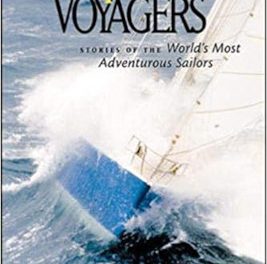
If I were new to GPS and wanted to learn the subject in the slickest and most efficient way possible, finding this book would be like coming down on Christmas morning to find that Santa had left absolutely everything on my list under the tree. First of all, the author had technical and managerial responsibilities during the creation of the GPS system. In a time when so many books are written by someone who read three books and then wrote his own (and publishers let them get away with it), this writer has the solid and fundamental mastery of the subject that lets him guide the reader step by step through the entire system from basic theory to detailed application on the water.
This is a book designed to be read straight through. When other writers use the evasion, “this is not a book that is meant to be read right straight through,” they are warning the prospective buyer that they lacked the grasp and discipline that would enable them to organize it for him. What they are offering is a do-it-yourself project. Put it back on the shelf. In this case, however, author Robert Sweet has done the hard labor for you. Read what he offers from start to finish, in sharp clear prose that is more of a delight than a chore, and you will know what you need to know to go safely and efficiently onto the water with your GPS.
Be warned, though, that this book is very dense with information. I approached it from a background of 10 years spent learning about GPS, through using it at sea and writing articles about it. I concluded that nothing is left out, and nothing is wrong. A major bonus for the practical boater is that it offers a virtual course in coastal navigation. It also provides detail, which can be hard to find elsewhere, of the actual wiring connections for interfacing GPS receivers with other equipment.
A friend complained to me that GPS for Mariners falls short of being specific enough about precisely which brand and model GPS to buy, but that is simply the nature of the business these days. Products appear and disappear with such rapidity that no published book could keep up in any useful way. What this book does do is give a clear overview of what features and capabilities you are likely to find in a GPS receiver, what they do for you, and how to evaluate whether you will find them useful. Those are the aspects that are changing less rapidly. A valuable appendix gives the Internet sites (URLs) for the major sources, from manufacturers, government, and dedicated hobbyists, for the most current information.
I am happy to give this book the highest possible recommendation. (You might actually want to skip Chapter 1 the first time through, because it may be more than you want to know about GPS history and the location of the ground control stations. Go back to it later, though, because these things are fun to know.)
GPS For Mariners By Robert Sweet (International Marine, 2003)




